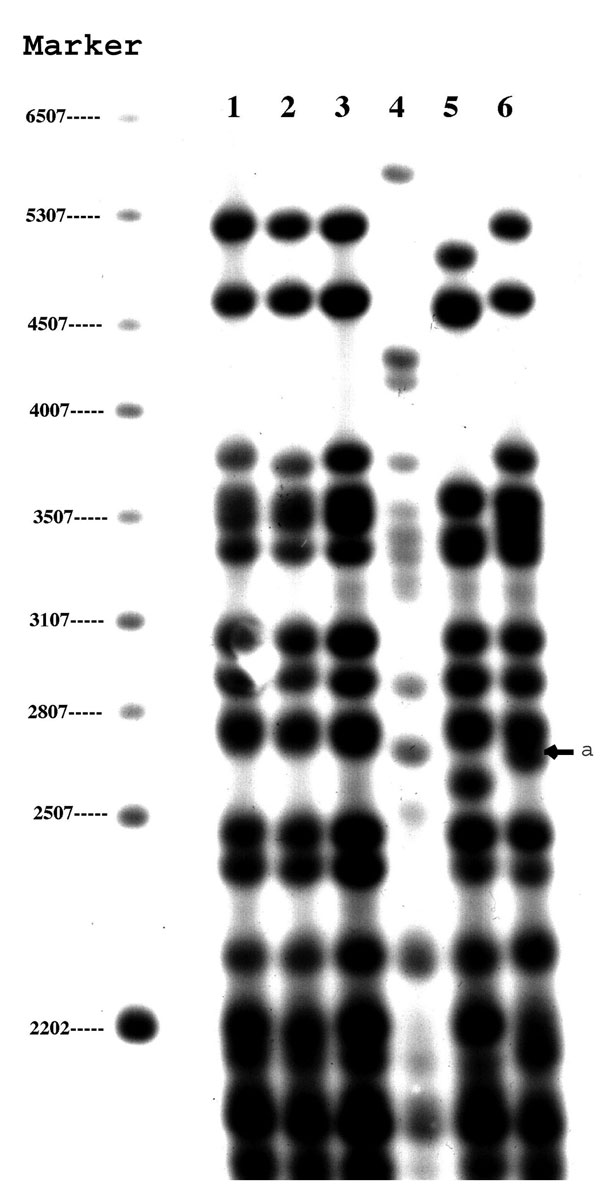Volume 8, Number 11—November 2002
THEME ISSUE
Tuberculosis Genotyping
Tuberculosis Genotyping Network, United States
Molecular Differentiation of Mycobacterium tuberculosis Strains without IS6110 Insertions
Figure 1

Figure 1. Polymorphic guanine cytosine-rich repetitive sequence restriction fragment length polymorphism results of six zero-copy IS6110 strains. Lanes 1–6 represent the six cases reported in this study. The arrow indicates an additional band at 2,760 bp in isolate 6 compared to lanes 1–3.
Page created: July 19, 2010
Page updated: July 19, 2010
Page reviewed: July 19, 2010
The conclusions, findings, and opinions expressed by authors contributing to this journal do not necessarily reflect the official position of the U.S. Department of Health and Human Services, the Public Health Service, the Centers for Disease Control and Prevention, or the authors' affiliated institutions. Use of trade names is for identification only and does not imply endorsement by any of the groups named above.